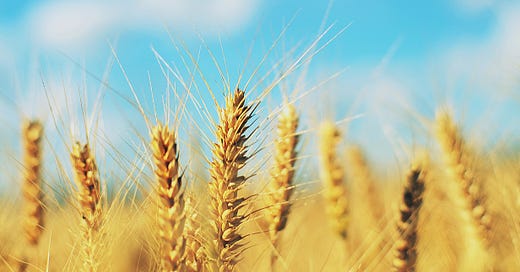Dear Brew Enthusiasts,
The last two weeks, I have written mostly about yeast.

Photo by Michal Janek on Unsplash
This week, I will talk about malts. We all know malt is such a crucial ingredient for making beer. But what properties ensure that the malt you use makes your beer stand out? To understand this, it is worth looking at some basic parameters or features. But first, some basic knowledge on malts and its raw ingredient, barley.
Barley (Hordeum vulgare), is a cereal plant of the grass family (Poaceae) and has found great use as a source of edible grains. In keeping with its use as a dietary source for humans and animals, and as a critical ingredient in beer making (in the form of malt), we can divide barley varieties into two major groups, two-row and six-row barley. What is the difference?
It is the architecture of the floral spike and the organisation of the flowers (and the grain kernels it gives rise to). Six-row barley produces three individual flowers (florets) connected to a “notch” on each side of the central spike, giving rise to a six-row configuration of grains. Two-row barley produces only two rows of fertile flowers that make kernels, whereas the other (lateral) florets are sterile (not giving rise to grains). Six-row barley varieties are used to make animal feed, owing to their propensity to have high levels of proteins. In contrast, two-row barley varieties have higher sugar content (and lower protein content), facilitating their use in malting. Keep in mind, however, that suitable six-row malt varieties may be out there and in use.
To produce excellent beers, the malts, and therefore the barley used, need to fulfil strict criteria using parameters such as:
Malt Extract (Or ME, expressed as the percentage of soluble sugars in the extract). These sugars form the food your yeast will use to grow and convert to alcohol.
Diastatic Power (DP) is a measure that expresses the ability to turn starch into simple sugars during germination.
Viscosity (VIS) describes the solubility and filtration speed of the malt wort. High-quality malts typically have low VIS values.
Wort β-glucan (WBG) content. β-glucans form the major component of cell walls and their presence in high levels will inhibit starch breakdown during grain germination. There is, therefore, some relationship between WBG content and DP values.
The Kolbach Index (KI) is a measure for soluble protein content.
Free amino nitrogen (FAN) represents the amino acids and small peptides released upon protein degradation by proteases. FANs are an important (and arguably) the only nitrogen source for growth during fermentation.
As you can see, there are several important and factors that not only influence wort (and beer) quality directly but also relationships between that impact malting quality. Over the next couple of posts, I will talk about some genetics that influences these factors.
In the meantime, please signup to this newsletter if you haven’t (there is a free option). If you have, would you consider sharing it with your fellow brew-enthusiasts?
Have a great weekend!
Cheers,
Edgar, The Beerologist.



